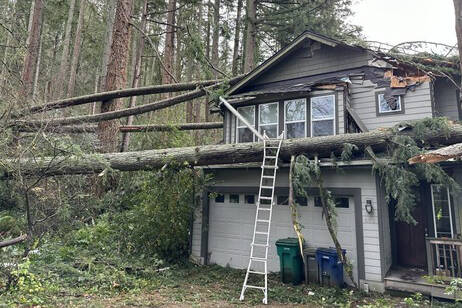“We’re in a city where it is even possible for people of means to be thrown out of their homes,” says Joe Martin, a social worker at the Pike Place Market Clinicand member of the Seattle Displacement Coalition. “All of us are that much closer to the streets, if we’re not already there.” And for those who do land in the streets, the prospects of shelter are worse than ever.
The 1997 Operation Nightwatch count found 723 men, women, and children sleeping on Seattle’s streets, 62 percent more than in 1996. Homeless advocates estimate that Seattle’s 2,300 emergency-shelter beds are enough to accommodate only half the people who need them on any given night. Not only the size but the composition of Seattle’s homeless population has changed; only in the past few months have shelters started regularly turning away young women and families with children—with no place else to send them.
The supply of emergency housing—the next step up from shelters—is also squeezed. In 1996 the Seattle Emergency Housing Service turned away 3,043 families for lack of space. In 1997, it turned away 4,100. Last October, a survey of 52 shelters found that 787 of their 2,518 residents were children under the age of 17—up from 659 when the same count was taken the year before. About three-fourths of these uprooted kids were younger than 12. The same census found 340 single women, and 285 people over 55.
Activists say beds are critically short for the growing number of homeless young women, especially those who don’t fall into categories like “battered wife” or “substance abuser” for which special facilities are reserved. Too often these women have to take refuge in mixed-sex shelters, where they’re vulnerable to harassment and intimidation by male residents.
The advocates say the homeless population is exploding for two reasons. First, all the “Emerald City” hype lures hungry dreamers from around the country, expecting to support their families building airplanes and skyscrapers here. But many get jobs that won’t even get them into an apartment; first and last month’s rent, cleaning deposit, and security check fee for a two-bedroom apartment can run to $2,000.
Second, resident Seattleites, from working families to elderly citizens, are being priced out of their homes. As rents rise in moderately priced buildings, buildings on the next tier down raise their rents and receive the newly displaced middle-income workers, forcing out the poorest tenants. “There’s been an ongoing erosion of very low-income housing,” says Martin. “We’re beginning to see how widespread that is now in terms of working families and people with mental health problems.”




